Marble, known for its unique sheen and classic appeal, enhances many homes through flooring, countertops, and decorative features. However, due to its porous nature and susceptibility to damage, proper care is required. Using the wrong cleaning products or methods can quickly mar its surface.
Let's explore a step-by-step guide about how to clean Marble surfaces to add real aesthetic value to your place.
|
Stain Type |
Cause |
Fix |
|
Food stains |
Spills from red wine, coffee, or tomato sauce |
Mix Warm water with a few drops of mild dish soap for a gentle clean. |
|
Oil stains |
Cooking, cosmetics, or just oily hands |
Blot up the excess oil from the marble floor and sprinkle with cornstarch or baking soda. |
|
Acid Stains |
Like lemon juice, vinegar, and certain cleaning products |
Utilize a marble poultice or a few applications of a baking soda paste. |
|
Water Stains |
Caused by hard water or mineral deposits |
Mix water and vinegar, then gently scrub the stained area with a soft cloth. |
|
Rust Stains |
Iron deposits |
Consider adding water with a few drops of lemon juice. |
|
Ink Stains |
Deep-seated ink |
Use warm water and hydrogen peroxide. |
|
Cosmetic Stains |
Spills from makeup, nail polish, or perfume |
Add a little amount of mild dish soap with warm water. |
|
Urine Stains |
The acidity of urine |
Create a solution by mixing equal amounts of water and pH-neutral soap. |
|
Footwear Stains |
Dirt, mud, or scuff marks |
Add mild dish soap into warm water. |
What You Need to Clean Marble

Here are tools and safe cleaning products for cleaning Marble Countertops:
Equipment / Tools
- Rag mop
- Spray bottle
- Squeegee
- Soft cotton cloths
- Microfiber cloths
- Bucket
Products:
- Good Old Soap and Water: A mixture of warm water and gentle dish soap.
- Hydrogen Peroxide Solution: A solution of 12% hydrogen peroxide can help to eliminate stains (for more intensive cleansing).
- Baking Soda Paste: Add water to baking soda to form a thick creamy paste that helps draw out stains trapped beneath the sealer.
-
Specialty Stone Cleaners: pH-neutral marble floor cleaners to make your cleaning a one-step process.
Some Preventive Measures Before Getting Started

We recommend the following tips to preserve marble surfaces. These are the precautionary practices you need to consider before cleaning:
Avoid Using Harsh Cleaners
If you want to prevent your marble from damage don't use the below-mentioned tools and products. They will only result in a scratch, etch, or dull appearance:
- Abrasive scrubbers or rough-woven cloths
- Products containing lemon, vinegar, or other acids
- Scouring powders or abrasive creams and rust removers that have a trace amount of hydrofluoric acid (HF)
Stay on Top of Spills
You have to address the spills instantly on the marble countertops and floors. It is necessary to prevent the penetration of liquids into the porous stone. Blotting the spills with a paper towel immediately is a good thing.
Protect Against Abrasive or Debris
Regularly clean interior marble floors with non-treated dry dust mop to maintain their quality. To protect it from scratches, place
slip-resistant mats or area rugs at the entrance both inside and outside. Make sure to use a vacuum cleaner on your home floor that has well-maintained wheels.
Routine Sealing especially for Bathroom and Kitchen Marble
Depending on usage and exposure to staining elements, seal your marble surfaces annually or more frequently. Choose the high-quality impregnating sealer made for maximum protection. Seal bathroom: Every 6 to 12 months and kitchen every 3 to 6 months.
Expert Tip: Consider using coasters under glasses that contain alcohol or citrus juices to avoid etching. Moreover, place hot dishes on trivets to avoid thermal shock, which can crack or damage the marble.
How Do You Clean Marble
So, how do you clean marble floors and keep your interior pristine? Since marble is a delicate and porous material that's prone to etching and staining, it's important to follow a proper cleaning method.
Step 1: Clean the Spill Immediately
First of all, if you notice a spill on your marble countertop or floor, wipe it off. Use a damp cloth to stop the liquid from sinking into the porous marble and leaving a stain. However, if the stain or spill is stubborn, then rub a soft sponge or specially made wipers to remove it.
Step 2: Make Your Cleaning Solution for Marble (Optional)
 Now, mix a pH-neutral cleaner with warm water. Make sure to read the manufacturer’s instructions. You can't opt for acidic or alkaline cleaners, as they can damage the marble floor tile surface badly.
Now, mix a pH-neutral cleaner with warm water. Make sure to read the manufacturer’s instructions. You can't opt for acidic or alkaline cleaners, as they can damage the marble floor tile surface badly.
You can also make your marble cleaner by adding ¼ cup isopropyl alcohol to a 32-ounce spray bottle. Then fill it with water. This works well for mild stains. If more power is needed, you can mix a few drops of organic liquid dish soap.
Step 3: Spray with a Cleaner
 After wiping up the spill or mess, spray a suitable cleaning agent directly on the stain. Use soft cotton cloths and clean rag mops paired with neutral cleaners, a mild liquid dishwashing detergent and water, or specialized stone cleaners. For convenience, you can try a commercially available stone cleaner that's safe for all marble coating including floors, shower walls, and countertops.
After wiping up the spill or mess, spray a suitable cleaning agent directly on the stain. Use soft cotton cloths and clean rag mops paired with neutral cleaners, a mild liquid dishwashing detergent and water, or specialized stone cleaners. For convenience, you can try a commercially available stone cleaner that's safe for all marble coating including floors, shower walls, and countertops.
Step 4: Apply a Paste to Deep Stains on Marble Surface (Optional)
 Use a poultice made by mixing a liquid cleaner with a white absorbent material like powdered chalk, white molding plaster, or talc for deep stains. Blend it to form a paste that feels consistent as creamy peanut butter. Then apply a thick layer on the stain and leave it for 24 hours. Afterward, wipe the paste nicely and repeat if it's required to remove the stain.
Use a poultice made by mixing a liquid cleaner with a white absorbent material like powdered chalk, white molding plaster, or talc for deep stains. Blend it to form a paste that feels consistent as creamy peanut butter. Then apply a thick layer on the stain and leave it for 24 hours. Afterward, wipe the paste nicely and repeat if it's required to remove the stain.
Step 5: Dry and Buff Your Marble Tiles
 Next, dry thoroughly with soft cloths or microfiber towels. It's important for preventing water spots and streaks. To turn up the shine, consider buffing motion.
Next, dry thoroughly with soft cloths or microfiber towels. It's important for preventing water spots and streaks. To turn up the shine, consider buffing motion.
Step 6: Sealing Your Marble Countertops
 Besides daily mopping, how to clean marble countertops or floors so they stand the test of time? Your answer is sealing. You can either DIY or hire a professional. What you have to do is spread a water-based sealant on your clean countertops. Then let it soak into the natural stone. After applying, remove any excess and dry the countertops. The whole process can take up to 48 hours.
Besides daily mopping, how to clean marble countertops or floors so they stand the test of time? Your answer is sealing. You can either DIY or hire a professional. What you have to do is spread a water-based sealant on your clean countertops. Then let it soak into the natural stone. After applying, remove any excess and dry the countertops. The whole process can take up to 48 hours.
Note: The best way to clean marble is with a microfiber cloth, the gold standard. The reason is; that it allows easy cleaning because products like bleach, chemicals, and disinfectants, can ruin the stone countertops. Use a soft-bristled broom to sweep marble bathroom floors instead of hard or stiff bristles.
How to Get Stains Out of Marble
 Keeping stains from setting into your marble outer side is easy if you prevent them from happening. What you have to do is just use a protective layer between the marble and anything you may place on it. It can be coasters, trays, or mats.
Keeping stains from setting into your marble outer side is easy if you prevent them from happening. What you have to do is just use a protective layer between the marble and anything you may place on it. It can be coasters, trays, or mats.
Or have you spotted a stain? Treat it quickly while it's damp. Apply baking soda (marble stain remover) and water poultice cover with plastic wrap for 24 to 48 hours. Then wipe it off.
7 Marble Cleaning Mistakes You Didn't Know You're Making
![]() Avoiding these common mistakes allows you to keep your marble looking fresh for years.
Avoiding these common mistakes allows you to keep your marble looking fresh for years.
- Using harsh chemical cleaners including acidic (vinegar, lemon juice), abrasives, alkaline solutions (bleach and ammonia), and generic household products.
- Ignoring spills and stains: If you leave them unattended, it will become more challenging to remove them.
- Opting for the wrong cleaning methods and tools such as rough sponges, scrub brushes, vigorous scrubbing, etc.
- Overlooking sealing maintenance and not using an appropriate sealer.
- Neglecting regular marble care and letting dust, dirt, and everyday spills build.
- Not using protective measures over the marble exterior.
- Not hiring a professional to seal your marble at least once a year.

Useful Tips for Cleaning a Marble Shower
Have a look at some productive shower-cleaning tips:
- Take additional measures to keep the walls clean as marble needs special attention
- After every shower, use a squeegee on shower walls to stop soap scum from building up, an ounce of prevention is worth a pound of cure
- For tough grime try marble-safe deep cleaner or dry steam
Conclusion
Wrapping up, whether on your shower walls, entryway floor, or kitchen backsplash, marble adds an elegant accent. But, this stone isn't as durable because of the porosity, so you need the right tools and techniques for cleaning Marble tiles. If you want professional help, contact MOSAICENTER offering you personalized advice. In addition to this, we help homeowners to find the perfect marble for their space.
FAQs
What is the Best Thing to Clean Marble with?
The best marble cleaners are: Good old soap and water, Hydrogen Peroxide solution, and baking soda paste.
Why Knowing How to Clean Marble Properly is Important?
Understanding the importance of proper marble cleaning helps prevent future deterioration, and to ensure the stone retains its integrity.
Can You Clean Marble with Dawn and Vinegar?
No, vinegar is acidic and can damage marble. Dawn dish soap is a mild detergent but it's not recommended for marble.
Does Baking Soda Clean Marble?
Yes, you can apply baking soda to clean marble countertops, floors, and fireplaces. It's quite effective.
Should Marble be Sealed Regularly?
Yes, you need to seal marble several times a year, especially a kitchen Marble.
Can I Use a Steam Mop on Marble Floors?
No, we don't recommend you to use any kind of steamer or steam mop, particularly on unsealed marble, and cracked or damaged surfaces. The reason is steam can penetrate the pores leading to more harm.
Halil I Oguz
At Mosaicenter's, Halil I Oguz brings a unique blend of strategic insight and creative flair to our digital experience. As our dedicated Content Strategist, he masterfully curates the online journey, allowing the inherent quality and design artistry of our premium tiles to truly shine.
From showcasing the intricate patterns of our mosaics to detailing the robust, scratch-resistant and water-resistant finishes of our porcelain and natural stone, Halil crafts content that is both informative and deeply engaging.
His work empowers Mosaicenter's clients to confidently select from our extensive range, helping them transform spaces with tiles that reflect both enduring style and practical excellence.


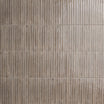
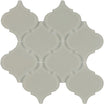

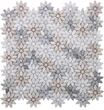
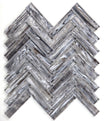
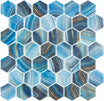
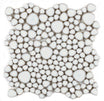
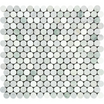

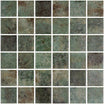

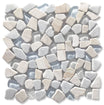
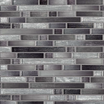
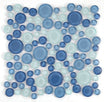
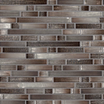




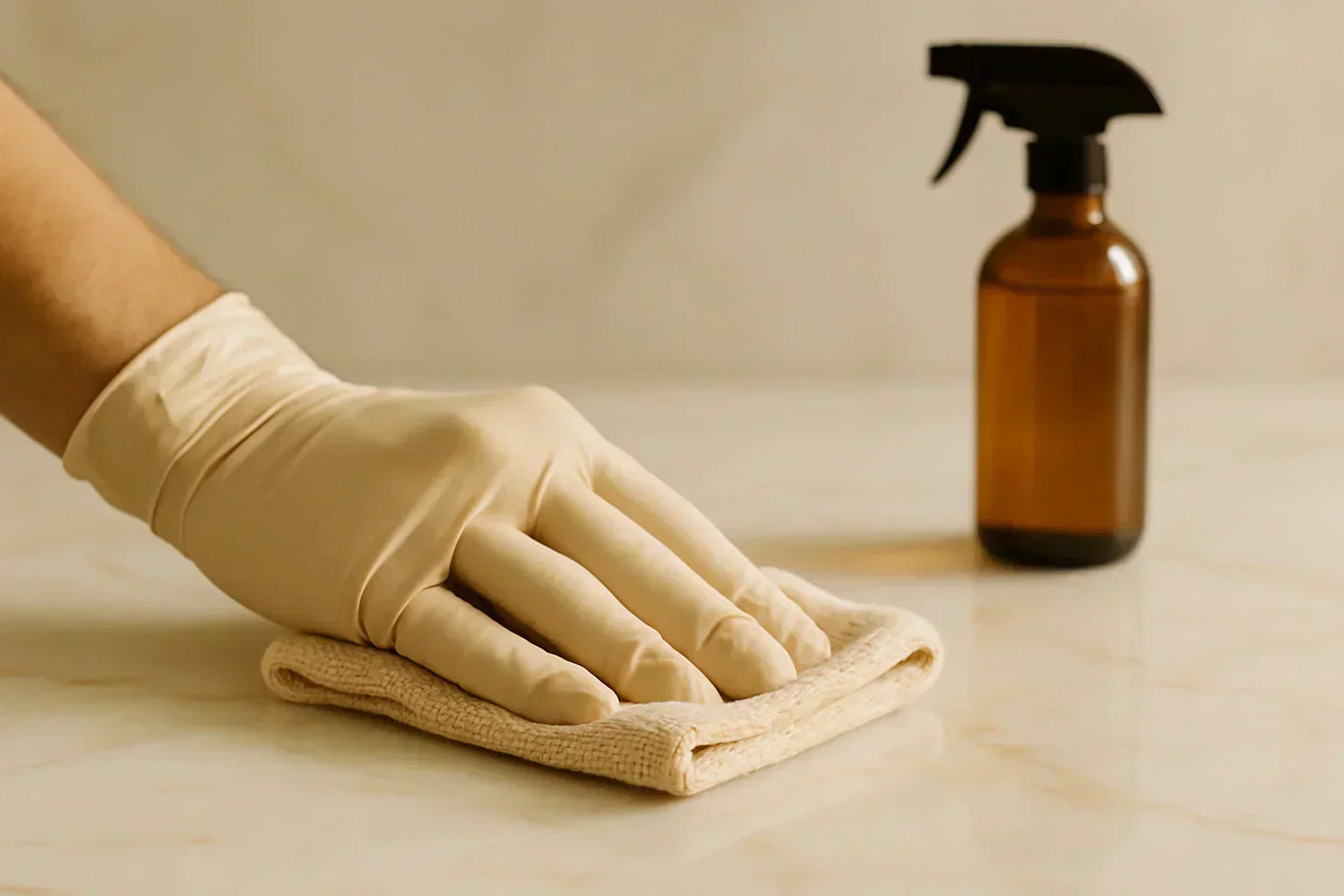

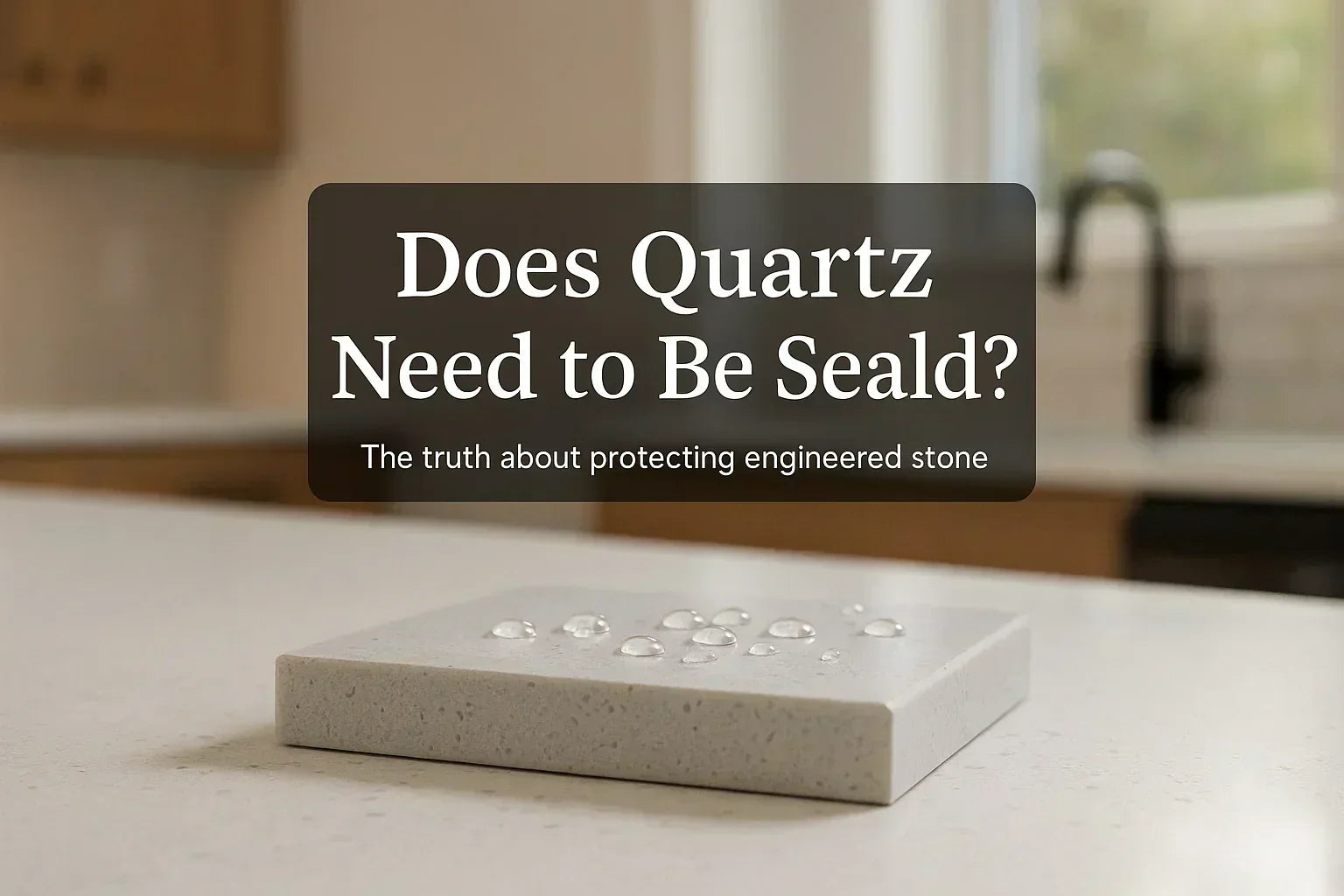
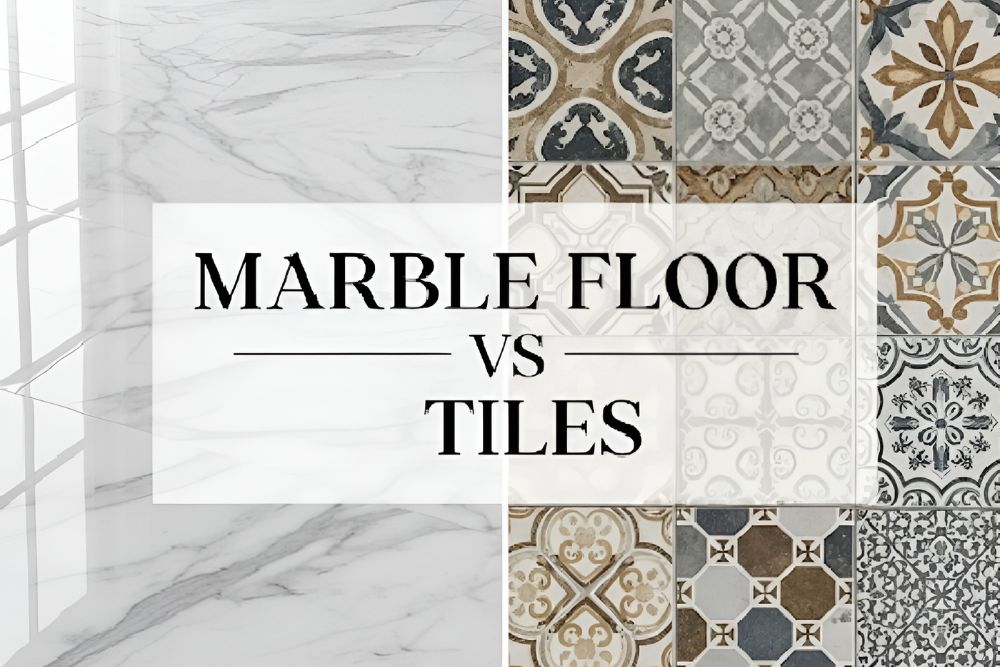
Leave a comment
This site is protected by hCaptcha and the hCaptcha Privacy Policy and Terms of Service apply.